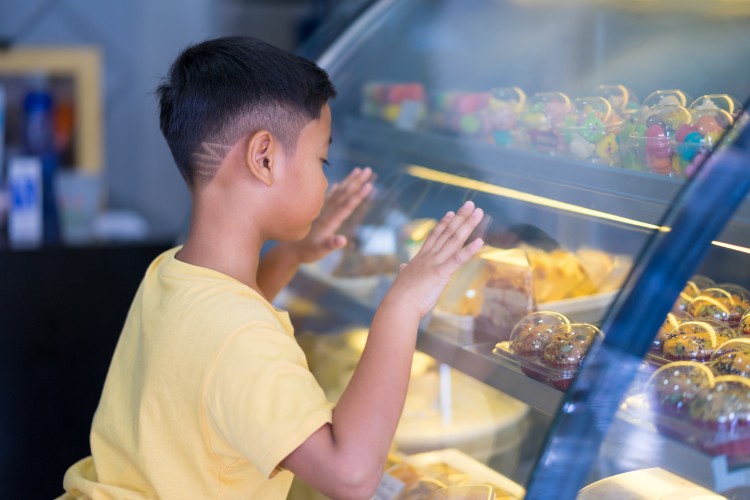
A taste for mindfulness: when kids imagine sweet treats, they choose smaller portions

A UBC Sauder School of Business study shows that when kids think about a food’s taste and texture before eating, it curbs their urge to go big.
Ask kids to choose a slice of cake, and many will naturally pick the largest one.
But what happens if those same kids picture the experience of savouring that slice of cake before they choose, imagining the taste and texture of every bite? According to a new study from the UBC Sauder School of Business, that simple act can curb their urge to splurge.
The study involved 171 children aged 7 to 11 who were divided into two groups. One group was asked to imagine the taste, smell and texture of kid-friendly snack foods and desserts. The control group performed a sensory exercise that was unrelated to food.
Both groups were then asked to pick a portion size of brownies— the recommended serving, a half portion, or a portion that was more than double the recommended size.
According to study co-author and UBC Sauder Assistant Professor Yann Cornil, the kids who imagined the sensory experience of eating before choosing the portion size were more likely to choose a smaller portion — likely because simply imagining this sensory experience tamed the kids’ impulse to overeat.
Cornil had been involved with similar research that showed the same effect in adults, and a team of child nutritionists from France approached his team to test the effect on kids.
“It’s similar to mindfulness, but more focused on the sensory pleasure of eating,” says Cornil. People often choose large serving sizes because they feel hungry, he adds, or they believe a heftier portion represents better value for money.
“There are many elements in the decision-making process that push us toward large portion sizes,” he says. “But we're showing that if we bring sensory pleasure into the decision criteria, people tend to eat less, because they already have the intuition that if their goal is mindful sensory enjoyment, they don't need a large portion.”
The children were also asked to anticipate how much pleasure they thought they would get from a small, medium or large portion of the brownie; then in later sessions, researchers gave the kids those portions and measured their actual enjoyment. In addition, they were asked to predict how much the snacks would quell their hunger, and later measured how much the treats actually sated their appetites.
The results, says Cornil, were consistent with what they observed in adults.
“We tend to think that the more we eat, the more pleasure we will get, as if each piece of brownie will accumulate in terms of pleasure. But in reality, it doesn't happen like that at all,” says Cornil, who co-authored the study with colleagues in his home country of France.
“The more we eat, the less enjoyable that last bite is. Sometimes it’s even a bit too much and last bite becomes unpleasant. And our overall evaluation is highly influenced by that last bite, such that large portions can, overall, be less enjoyable than smaller ones” he says. “People expect pleasure to accumulate with quantity. But in reality, pleasure might actually decrease with quantity.”
Cornil says parents should expose kids to a wide range of foods early in life, and teach them to develop that sensory appreciation by discussing things like the tastes and textures of the items they eat, as well as the pleasure they get from eating them.
According to Cornil, there are two categories of pleasure when eating. There's a very spontaneous, visceral, impulse-based form of pleasure. The other, he says, is a more elevated or sophisticated pleasure that can be taught very early on, and involves appreciating the multisensory dimensions of food, as well as its symbolic and social value. “And we know that this elevated pleasure goes hand in hand with a preference for smaller portion sizes.”
To hone that sense of pleasure, Cornil recommends sitting around a table to eat, turning off phones and TVs, and paying attention to the food, as opposed to eating mindlessly — which he recognizes can be a challenge with kids.
“When we eat as if we were celebrating food, then we tend to be just as satisfied with smaller portions. We satiate faster,” he says. “So we eat less.”
Portion size selection in children: Effect of sensory imagery for snacks varying in energy density was co-authored by Yann Cornil from the UBC Sauder School of Business, along with Christine Lange, Camille Schwartz, Célia Hachefa, and Sophie Nicklaus from Université Bourgogne Franche-Comté and Pierre Chandon from INSEAD. The study was published in the July 2020 issue of the journal Appetite.